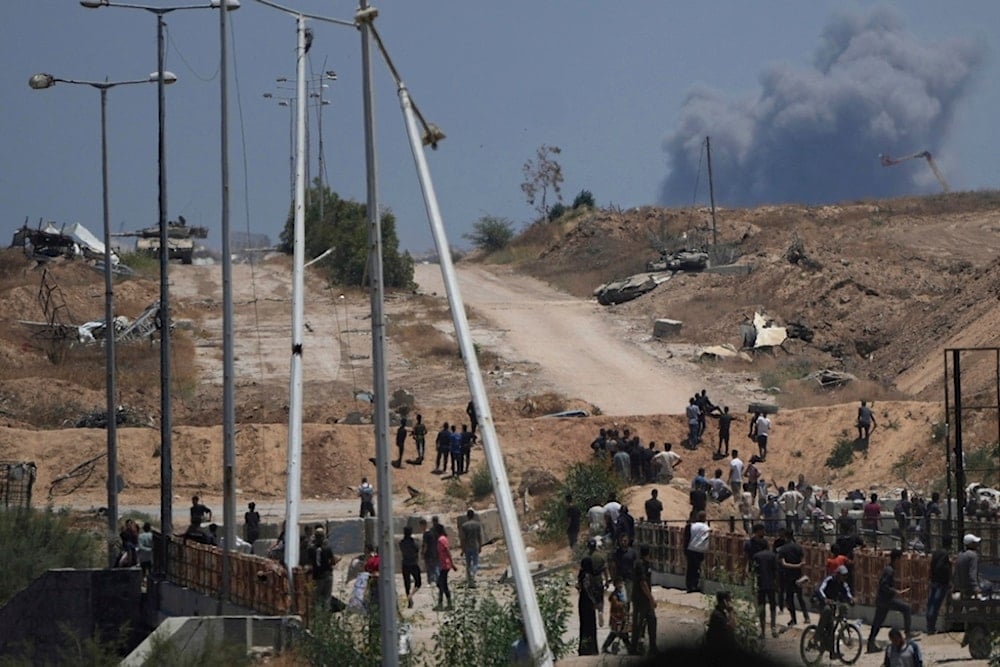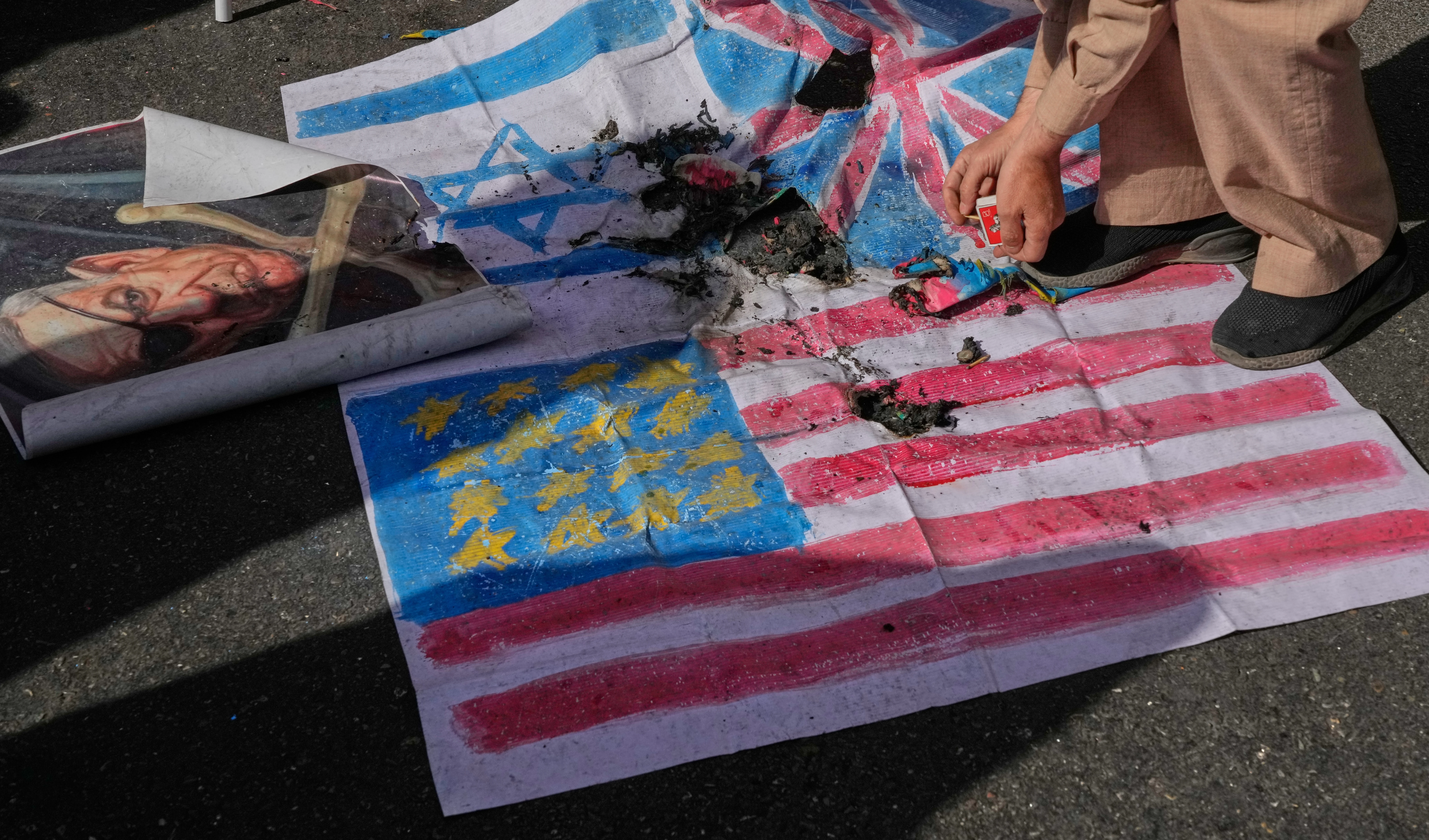Hamas announces review of updated US ceasefire proposal
While Hamas is expected to release captives and halt armed resistance, the deal includes no enforceable mechanisms to prevent future Israeli aggression and no assurances regarding the political rights of Palestinians.
-

Israeli army tanks are seen positioned as smoke rises in the background in southern Gaza, in Khan Younis, southern Gaza Strip, on Thursday, May 29, 2025. (AP Photo/Abdel Kareem Hana)
Hamas announced on Thursday that it has received a new ceasefire proposal for the Gaza Strip through mediators. The plan was submitted by US President Donald Trump's envoy to the Middle East, Steve Witkoff.
In its statement, the Palestinian resistance said it would study the proposal "responsibly," stressing its commitment to a deal that safeguards "the interests of the Palestinian people, provides relief, and secures a permanent ceasefire in the Strip."
The announcement came just days after Hamas had formally accepted a general framework for a ceasefire deal, also brokered by Witkoff, which includes a permanent halt to hostilities, a full withdrawal of Israeli occupation forces, unimpeded humanitarian aid, and the formation of a professional committee to oversee civil governance in the Strip.
Truce framework
The updated proposal appears to build on that framework with further input from Palestinian-American mediator Bishara Bahbah. According to sources familiar with the document, it outlines a 70-day ceasefire, a compromise between Hamas's proposed 90 days and the original 60-day version, during which 10 Israeli captives (five alive and five deceased) would be released in two batches. In return, a specified number of Palestinian detainees would be freed, under the supervision of international mediators.
Israeli media, meanwhile, quoted an official stating that the Israeli leadership "accepts Witkoff's proposal," signaling the possibility of a rare point of agreement after months of failed negotiations.
Read more: 'Israel' ramps up diplomacy to prevent German arms export restrictions
Witkoff, speaking on Wednesday, described the latest draft as a “comprehensive solution” to the war on Gaza. He stressed Washington's commitment to a “long-term resolution to the conflict in the Middle East,” and expressed hope for a breakthrough. Donald Trump echoed that optimism, stating that the United States is “doing well on Gaza,” and urged all sides to “approve the document presented by Witkoff.”
The plan also calls for formal negotiations to begin during the truce, aiming to reach a lasting political solution. These talks would include conditions such as Hamas pledging not to pose future threats to Israeli security and the establishment of a technocratic government for post-war reconstruction.
Leverage erosion
However, critics argue that the proposal mirrors a familiar pattern seen under the Biden administration, a phased process that steadily erodes Hamas's leverage while offering no meaningful guarantees for Palestinian sovereignty or long-term protection.
While Hamas is expected to release captives and halt armed resistance, the deal includes no enforceable mechanisms to prevent future Israeli aggression and no assurances regarding the political rights of Palestinians.
If implemented, the agreement would mark the first serious step toward de-escalation since the war resumed on March 18, following a brief ceasefire. According to Gaza's health authorities, the conflict has so far killed over 54,000 Palestinians and wounded more than 123,000 over the past 600 days.

 3 Min Read
3 Min Read









